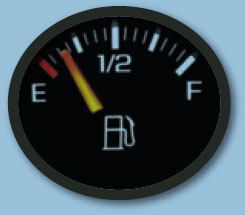The Grocery Manufacturers Association (GMA) and fellow ethanol foes have been fairly quiet since food prices began moderating last year, but the coalition has gotten back into action this past week with a new campaign opposing E15.
 A scathing editorial in the Washington Times Monday followed directly on the heels of a full-page ad in “The Hill” last week sponsored by GMA, the American Meat Institute, the Snack Food Association, the International Dairy Foods Association, and other groups representing oil companies, environmentalists and boat manufacturers. The editorial attacks “Big Corn” for claiming “that forcing Americans to use this renewable fuel would reduce dependency on Mideast oil and lead to cleaner air. It’s just as likely, however, that they want to get their hands on the $16 billion a year from the 45-cent-per-gallon “blender’s tax credit” – which actually goes to oil companies who blend ethanol with gasoline, not farmers.
A scathing editorial in the Washington Times Monday followed directly on the heels of a full-page ad in “The Hill” last week sponsored by GMA, the American Meat Institute, the Snack Food Association, the International Dairy Foods Association, and other groups representing oil companies, environmentalists and boat manufacturers. The editorial attacks “Big Corn” for claiming “that forcing Americans to use this renewable fuel would reduce dependency on Mideast oil and lead to cleaner air. It’s just as likely, however, that they want to get their hands on the $16 billion a year from the 45-cent-per-gallon “blender’s tax credit” – which actually goes to oil companies who blend ethanol with gasoline, not farmers.
The editorial states that increasing the use of ethanol will increase food prices, damage engines and have little or no impact on cutting the pollution in the air. Growth Energy, which filed the petition with EPA last year to increase the blend level for ethanol in gasoline to 15 percent, issued a response to the editorial charging that those conclusions are based on “obsolete information, ethanol myths and scare tactics.”
“First, technological advancements in the agriculture industry have made ethanol production more efficient than ever before. The latest crop forecasts prove that our farmers can produce more than enough grain to satisfy all the demand for food, fuel and feed in this country without increasing prices at the grocery store,” said Growth Energy CEO Tom Buis. “Second, exhaustive data has proven that engine performance and durability do not suffer from higher ethanol blends. According to a newly-released Rochester Institute of Technology study, E20 – a blend of 20-percent ethanol with gasoline – has no measurable impact on vehicle drivability or durability, and lower tailpipe emissions compared to conventional gasoline.
“Lastly, the editorial overlooks the economic and environmental benefits associated with higher blends of ethanol. A national study by the Windmill Group, out of North Dakota, estimated that moving from blends of E10 to E15 would create 136,000 jobs in the United States and help reduce our green house gas emissions. Science proves that grain ethanol is a low-carbon fuel that produces 59 percent fewer green house gas emissions than gasoline.”
The coalition behind the ad in “The Hill” has introduced a website called FollowTheScience.org that claims ethanol is bad for engines, the environment, food prices and even rural communities. One of the sources they offer as proof that ethanol impacts food prices and rural communities is the Congressional Budget Office report released in April 2009 which concluded that ethanol had only a small impact on higher food costs, while high oil prices had the most impact. A recent report from the UK came up with the same conclusion and noted that the biggest driver for higher commodity prices at the time was fuel and fertilizer, which account for over half of the input costs for crop farmers.

